The latest AI algorithms are probing the evolution of galaxies, calculating quantum wave functions, discovering new chemical compounds and more. Is there anything that scientists do that can’t be automated?
Category: quantum physics – Page 786
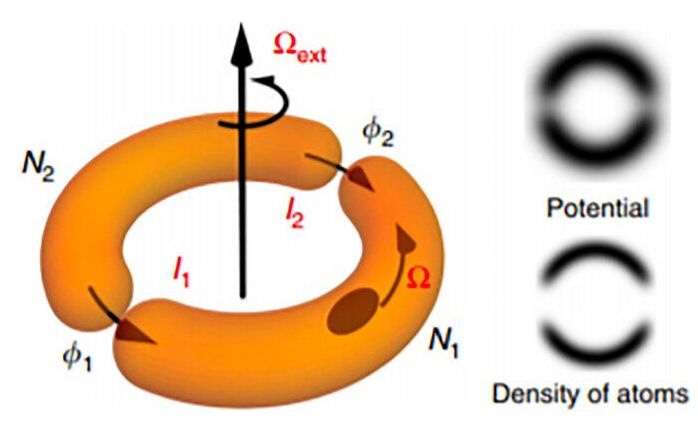
Atomtronic device could probe boundary between quantum, everyday worlds
A new device that relies on flowing clouds of ultracold atoms promises potential tests of the intersection between the weirdness of the quantum world and the familiarity of the macroscopic world we experience every day. The atomtronic Superconducting QUantum Interference Device (SQUID) is also potentially useful for ultrasensitive rotation measurements and as a component in quantum computers.
“In a conventional SQUID, the quantum interference in electron currents can be used to make one of the most sensitive magnetic field detectors,” said Changhyun Ryu, a physicist with the Material Physics and Applications Quantum group at Los Alamos National Laboratory. “We use neutral atoms rather than charged electrons. Instead of responding to magnetic fields, the atomtronic version of a SQUID is sensitive to mechanical rotation.”
Although small, at only about 10 millionths of a meter across, the atomtronic SQUID is thousands of times larger than the molecules and atoms that are typically governed by the laws of quantum mechanics. The relatively large scale of the device lets it test theories of macroscopic realism, which could help explain how the world we are familiar with is compatible with the quantum weirdness that rules the universe on very small scales. On a more pragmatic level, atomtronic SQUIDs could offer highly sensitive rotation sensors or perform calculations as part of quantum computers.

Researchers realize nanoscale electrometry based on magnetic-field-resistant spin sensors
A team led by Prof. Du Jiangfeng, Prof. Shi Fazhan, and Prof. Wang Ya from University of Science and Technology of China, of the Chinese Academy of Sciences, proposed a robust electrometric method utilizing a continuous dynamic decoupling technique, where the continuous driving fields provide a magnetic-field-resistant dressed frame. The study was published in Physical Review Letters on June 19.
Characterization of electrical properties and comprehension of the dynamics in nanoscale become significant in the development of modern electronic devices, such as semi-conductor transistors and quantum chips, especially when the feature size has shrunk to several nanometers.
The nitrogen-vacancy (NV) center in diamond—an atomic-scale spin sensor—has shown to be an attractive electrometer. Electrometry using the NV center would improve various sensing and imaging applications. However, its natural susceptibility to the magnetic field hinders effective detection of the electric field.
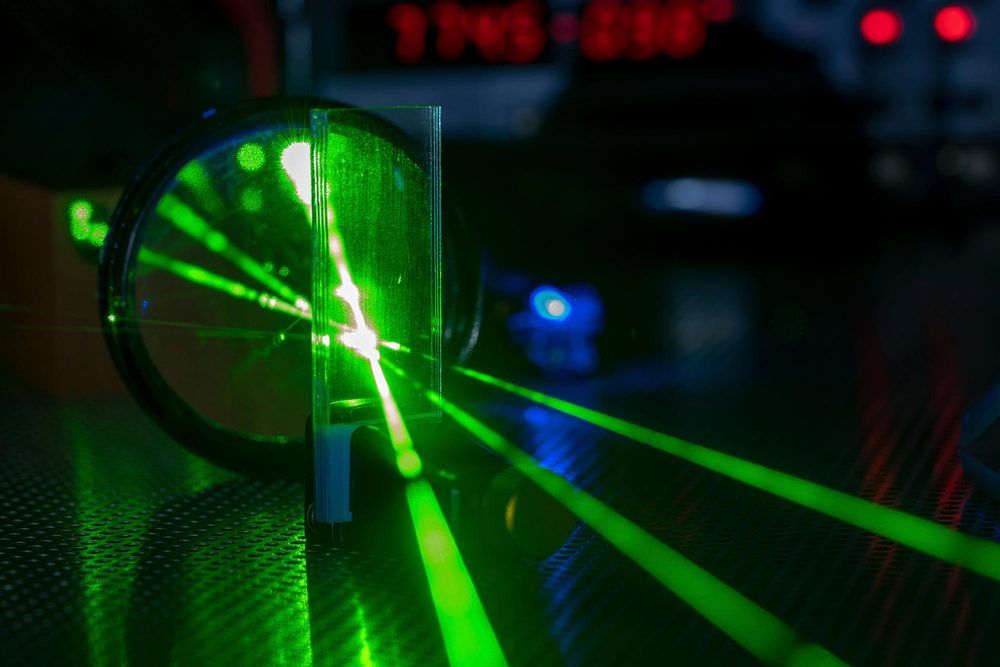
Ground-Breaking Research Shows That Laser Spectral Linewidth Is Classical-Physics Phenomenon
New ground-breaking research from the University of Surrey could change the way scientists understand and describe lasers – establishing a new relationship between classical and quantum physics.
In a comprehensive study published by the journal Progress in Quantum Electronics, a researcher from Surrey, in partnership with a colleague from Karlsruhe Institute of Technology and Fraunhofer IOSB in Germany, calls into question 60 years of orthodoxy surrounding the principles of lasers and the laser spectral linewidth – the foundation for controlling and measuring wavelengths of light.
In the new study, the researchers find that a fundamental principle of lasers, that the amplification of light compensates for the losses of the laser, is only an approximation. The team quantify and explain that a tiny excess loss, which is not balanced by the amplified light but by normal luminescence inside the laser, provides the answer to the spectral linewidth of the laser.
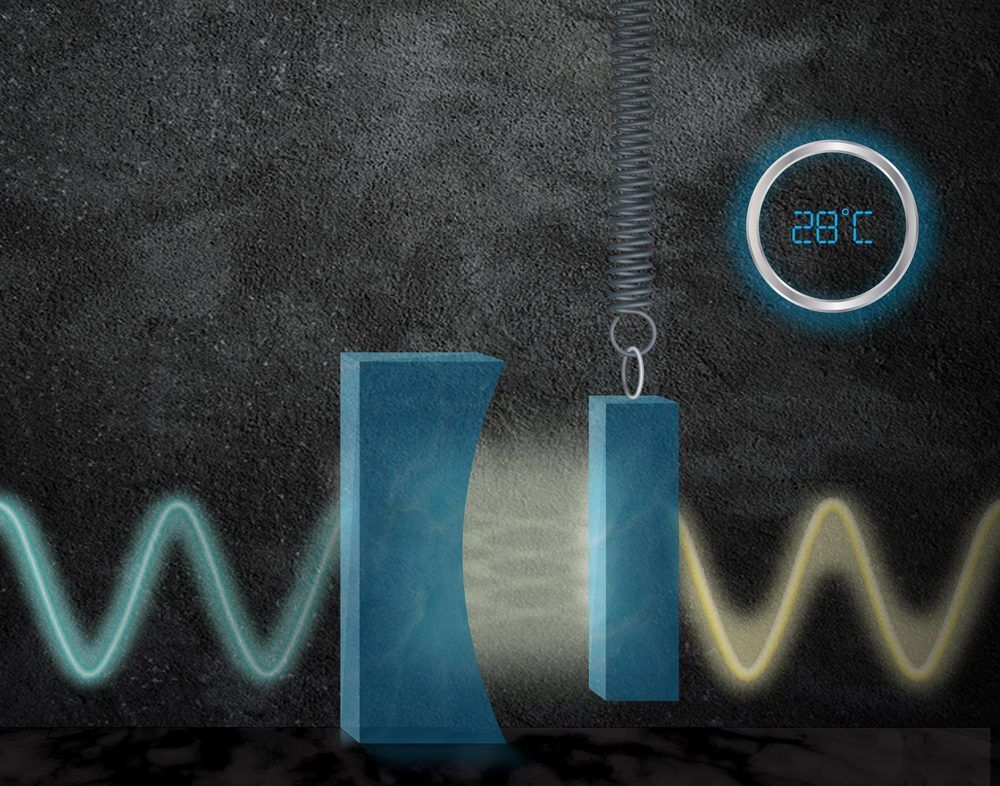
MIT “Light Squeezer” Reduces Quantum Noise in Lasers, Enhances Quantum Computing and Gravitational-Wave Detection
Portable System Boosts Laser Precision, at Room Temperature
Physicists at MIT have designed a quantum “light squeezer” that reduces quantum noise in an incoming laser beam by 15 percent. It is the first system of its kind to work at room temperature, making it amenable to a compact, portable setup that may be added to high-precision experiments to improve laser measurements where quantum noise is a limiting factor.
The heart of the new squeezer is a marble-sized optical cavity, housed in a vacuum chamber and containing two mirrors, one of which is smaller than the diameter of a human hair. The larger mirror stands stationary while the other is movable, suspended by a spring-like cantilever.

Rsearchers suggest modification of quantum encryption system with compact detector
A new system can significantly lower the production costs costs of mass quantum key distribution (QKD) networks, which will make them available to a wider user audience. This will make it possible to use QDK in the regular fiber-optic cable infrastructure. The paper was published in Scientific Reports.
Many have heard about quantum key distribution (QKD), which is also sometimes referred to as quantum encryption. Today, this is one of the safest ways to encode information that can then be used by major banks, military and governmental organizations. In a QDK system, the information is transmitted by quantum radiation, which is extremely hard for eavesdroppers to intercept.
“As a rule, QKD uses a weak laser light with an average number of photons less than unity,” explains Eduard Samsonov, a research associate at ITMO’s Faculty of Photonics and Optical Information. “This light has fundamental special features, the so-called quantum effects that leave no chance for a third party to infiltrate the channel to read the information without being noticed.”
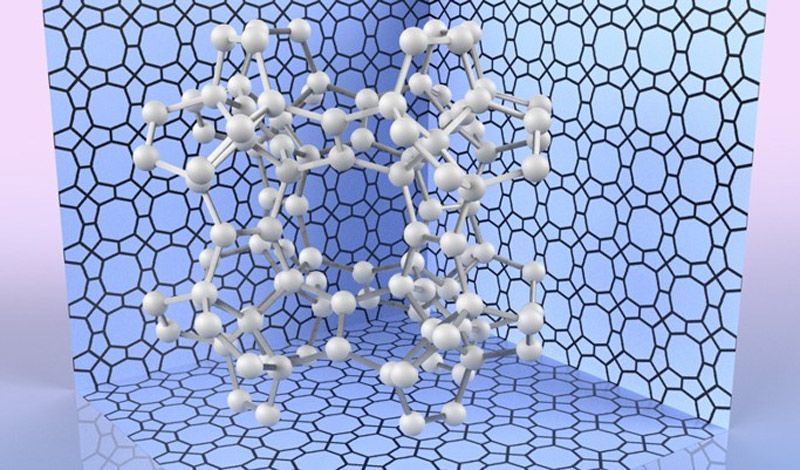
Pentadiamond, a new addition to the carbon family
To calculate the most stable atomic configuration, as well as estimate its hardness, the team relied on a computational method called density functional theory (DFT). DFT has been successfully used throughout chemistry and solid-state physics to predict the structure and properties of materials. Keeping track of the quantum states of all the electrons in a sample, and their interactions, is usually an intractable task. Instead, DFT uses an approximation that focuses on the final density of electrons in space orbiting the atoms. This simplifies the calculation to make it suitable for computers, while still providing very precise results.
Based on these calculations, the scientists found that the Young’s modulus, a measure of hardness, for pentadiamond is predicted to be almost 1700 GPa – compared with about 1200 GPa for conventional diamond.
“Not only is pentadiamond harder than conventional diamond, its density is much lower, equal to that of graphite,” explains co-author Professor Mina Maruyama.
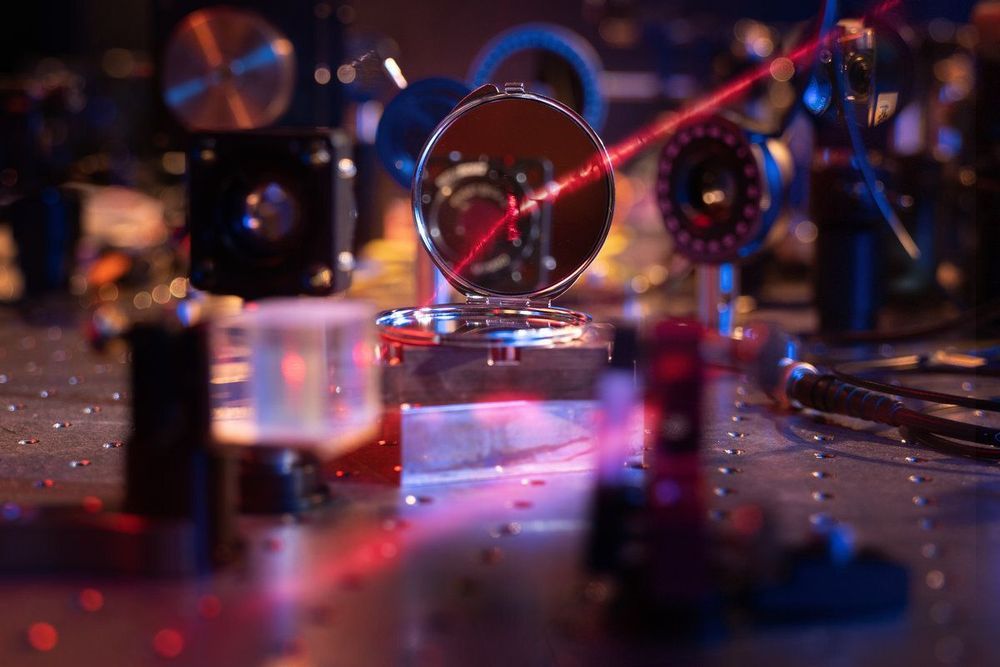
Physicists engineer an optical mirror made of only a few hundred atoms
Physicists at the Max Planck Institute of Quantum Optics (MPQ) have engineered the lightest optical mirror imaginable. The novel metamaterial is made of a single structured layer that consists only of a few hundred identical atoms. The atoms are arranged in the two dimensional array of an optical lattice formed by interfering laser beams. The research results are the first experimental observations of their kind in an only recently emerging new field of subwavelength quantum optics with ordered atoms. So far, the mirror is the only one of its kind. The results are today published in Nature.
Usually, mirrors utilize highly polished metal surfaces or specially coated optical glasses to improve performance in smaller weights. But physicists at MPQ now demonstrated for the very first time that even a single structured layer of a few hundred atoms could already form an optical mirror, making it the lightest one imaginable. The new mirror is only several tens of nanometers thin, which is a thousand times thinner than the width of a human hair. The reflection, however, is so strong it could even be perceived with the pure human eye.

The Sun Only Shines Because Of Quantum Physics
Earth, as we know it, is only teeming with life because of the influence of our Sun. Its light and heat provides every square meter of Earth — when it’s in direct sunlight — with a constant ~1500 W of power, enough to keep our planet at a comfortable temperature for liquid water to continuously exist on its surface. Just like the hundreds of billions of stars in our galaxy amidst the trillions of galaxies in the Universe, our Sun shines continuously, varying only slightly over time.
But without quantum physics, the Sun wouldn’t shine at all. Even in the extreme conditions found in the core of a massive star like our Sun, the nuclear reactions that power it could not occur without the bizarre properties that our quantum Universe demands. Thankfully, our Universe is quantum in nature, enabling the Sun and all the other stars to shine as they do. Here’s the science of how it works.
Planet Parade: All The Planets Are Now Visible In The Night Sky And Here Is How To Watch Them
Admin and Founder of The Secrets of the Universe and former intern at Indian Institute of Astrophysics, Bangalore, I am a science student pursuing Master’s in Physics from India. I love to study and write about Stellar Astrophysics, Relativity & Quantum Mechanics.
Mercury.